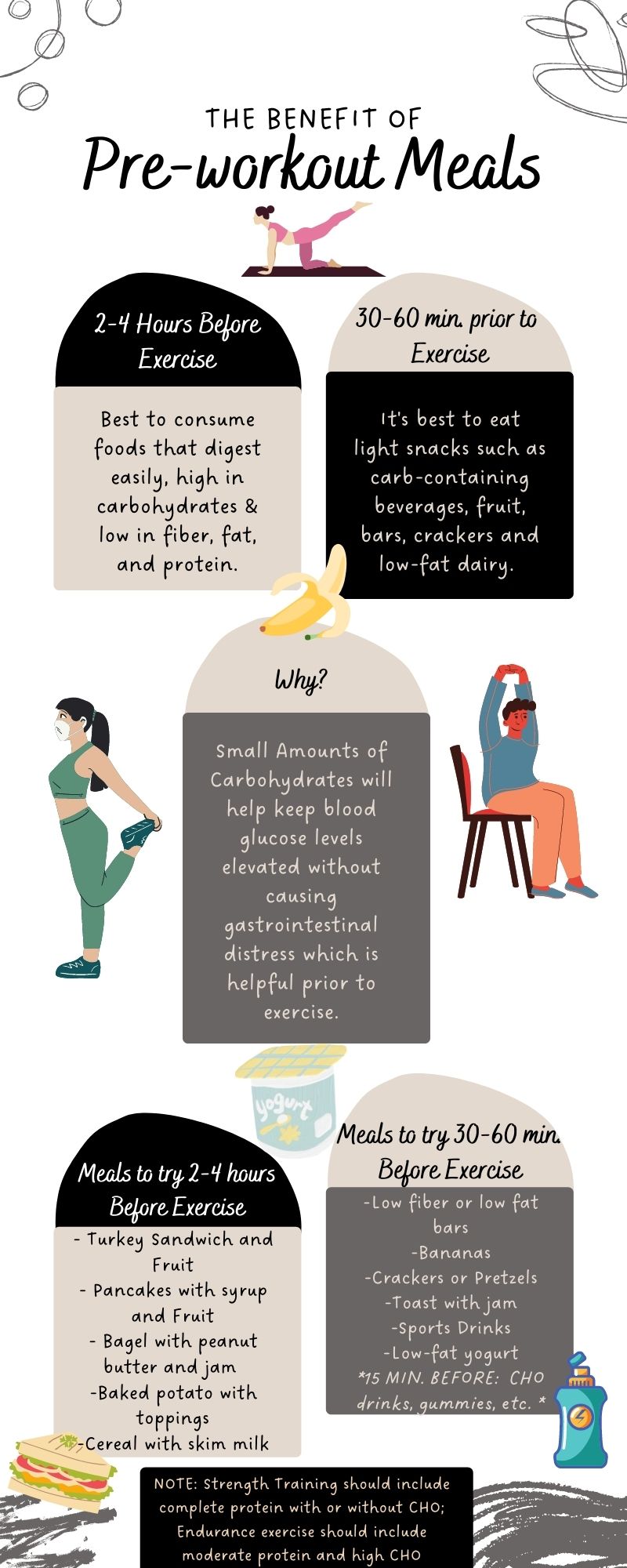Energizing Your Exercises: The Art of Mid-Workout Snacking
Delve into the realm of mid-workout nutrition where the goal is to prevent the dreaded 'bonk' during long bouts of exercise. We'll explore why fuelling your body correctly can enhance performance and how mindful eating, hydration, and tracking can work together to elevate your workout experience, featuring insights into how tracking tools like the Workout Notepad can seamlessly integrate into your fitness journey for optimal nourishment and performance.
WN
By Workout Notepad
May 23, 2024

Understanding the ‘Bonk’: The Science Behind Exercise Fatigue

exercise fatigue illustration
Understanding the ‘Bonk’: The Science Behind Exercise Fatigue
Fuel for Thought: Nutritional Strategies Pre-Workout
Long before you lace up your shoes and start your stretching routine, pre-workout nutrition stands as a fundamental component that can make or break your performance. The initial meal or snack isn’t just about quelling hunger; it’s a strategic move to fuel the body’s energy reserves—particularly with carbohydrates, the primary energy source for high-intensity workouts. An optimal balance is critical; you want to consume enough to ensure your muscles are primed, without overeating, which can cause discomfort or sluggishness. The symbiosis between carbohydrates and protein in your pre-workout meal facilitates both an adequate energy supply for your muscles and the muscle protein synthesis needed for repair and recovery. This isn’t merely about choosing the right types of food, but also timing the consumption so that your body’s peak energy use aligns with the peak availability of nutrients. Ideally, a complete meal comprising carbohydrates, protein, and a moderate amount of fat should be consumed 2-3 hours before the start of a strenuous workout session, giving ample time for digestion and absorption. Remember, overlooking a well-balanced meal might leave you vulnerable to early fatigue and diminished performance, something every athlete aims to avoid.
Carb-Loading vs. Tactical Snacking: Mid-Workout Solutions
The conventional wisdom of carb-loading is deeply embedded in athletic culture, serving as a foundational strategy aimed at maximizing glycogen stores before endurance events. This practice typically involves a specialized dietary plan in the days leading up to a competition, where athletes significantly up their carbohydrate intake in preparation for extended periods of physical exertion lasting more than 90 minutes. However, mid-workout nutritional tactics often differ from the age-old process of carb-loading. Energy gels, bars, and real food alternatives provide athletes with immediate, digestible energy that can be used to refuel during exercise. Unlike the gradual, pre-emptive nature of carb-loading, these quick snacks are tactically consumed in the midst of activity, focusing on efficiency and rapid absorption to replenish dwindling nutrients and delay the onset of fatigue.
Contrasts between these methods reveal trade-offs that athletes need to consider based on the duration and intensity of their event, tolerance to certain foods, and individual metabolic responses. While carb-loading requires planning and measured intake to avoid common pitfalls such as excessive fiber or fat consumption, tactical snacking offers a straightforward, on-the-go feeding option that’s less likely to disrupt performance mid-stride. Selecting the optimal snacking option—whether it’s a specific brand of gel or bar that sits well with one’s stomach, or whole foods like bananas and dates that might provide additional micro-nutrients and fiber—can play an essential role in maintaining energy levels and cognitive function throughout a workout. The next section of the article will delve into the equally vital topic of hydration, a factor that works hand in hand with nutrition to prevent depletion and discomfort during exercise.
The Hydration Equation: Balancing Water Intake During Exercise
Monitored hydration is key to achieving the delicate balance that ensures both effective performance and optimal health. To maintain this equilibrium, begin with a baseline of your half body weight in ounces as a starting point for daily intake, and adjust depending on exertion levels and climate. Pay close attention to your body’s indicators of dehydration—such as increased thirst, dry mouth, and unusually dark urine—to gauge the need for fluid. While moderate, consistent sips of water every 5 to 10 minutes can replenish lost fluids during exercise, be wary of overhydration. This condition, though less frequent, can lead to equally challenging health complications. Including electrolyte-rich foods or sports drinks can further tailor your regimen by replenishing essential salts lost through perspiration, thereby aiding in the avoidance of both hydration extremes.
Aligning hydration with the customization of nutritional intake can elevate an exercise regimen to new heights. Proactively adjusting water consumption to align with strategic snacking—especially nutritious bites tailored to sustain you through your workout—helps maintain energy levels without causing digestive discomfort. It’s also advantageous to note fluid loss post-workout, aiming to intake 24 ounces of fluids for every pound lost to effectively rehydrate. Monitoring such details, possibly by employing helpful tools like fitness journals or apps, can offer insights into the distinctions of personal hydration needs. For example, with products like the Workout Notepad, individuals can track their fluid and nutritional intake alongside their physical performance, creating data-driven adjustments that resonate with their unique physiology. Noting these personal variances prepares us for the subsequent section, which explores fine-tuning snacking choices to one’s individual experiences and goals, illustrating the profound influence of personalizing nutrition strategies.
Fine-Tuning Your Fuel: Customizing Your Mid-Workout Nutrition
Fine-Tuning Your Fuel: Customizing Your Mid-Workout Nutrition
Post-Workout Nutrition: Sealing the Deal for Recovery
Post-Workout Nutrition: Sealing the Deal for Recovery
Tech Meets Tenacity: How the Workout Notepad Can Enhance Your Routine
Tech Meets Tenacity: How the Workout Notepad Can Enhance Your Routine
Final Thoughts: Nourishment Meets Knowledge

satisfied athlete post-workout
As we reach the conclusion of our exploration into the synergy of nourishment and knowledge during workouts, it’s imperative to reflect on the core message that has been threaded throughout this article. Effective exercise isn’t solely a matter of physical effort; it is equally a dance of precision nutrition and informed decision-making. A balanced diet replete with complete proteins, carbohydrates, fruits, and vegetables forms the cornerstone of any fitness regimen. Understanding that proper food timing—before and after workouts—hydration standards, and honoring rest can enhance workout efficacy and stave off dreaded mid-workout fatigue. It’s about creating a resilient system capable of sustaining energy levels, improving performance, and accelerating recovery to ultimately prevent negative repercussions like lowered immunity, impaired sleep, and increased injury risk.
Mounting evidence and personal experiences alike underscore the value of tracking nutrition and fitness activity. The Workout Notepad, with its user-friendly performance graphs and back-up capabilities, exemplifies how modern tech can be marshaled to tailor and optimize one’s exercise protocol. By utilizing tools like this to monitor their progress, athletes and fitness enthusiasts can glean insights into their activity patterns, nutrition efficiency, and overall regimen effectiveness, leading to dynamic improvements and a more disciplined approach to fitness. Recognizing the intricate link between the tangible, such as diet, and the abstract, such as knowledge garnered from diligent recording, empowers everyone from the casual gym-goer to the elite athlete to reach for heights previously unattainable. In pairing sound nutritional strategies with the conscientious use of tech such as the Workout Notepad, workouts are not just about enduring, but thriving with each stride, lift, and stretch.
SOURCES
- https://fruitsandveggies.org/stories/everyday-chef-dont-bonk-proper-fueling-long-workouts-races/
- https://www.mayoclinic.org/healthy-lifestyle/fitness/in-depth/exercise/art-20045506
- https://pressbooks.calstate.edu/app/uploads/sites/3/2022/05/Benefits-of-Pre-workout-Meals.jpg
- https://www.biotechniques.com/molecular-biology/why-we-hit-the-wall/
- https://www.eurekalert.org/news-releases/474042
- https://media.istockphoto.com/id/1307328855/vector/fat-woman-feeling-tired-while-running-on-treadmill-weight-loss-concept-vector-flat-cartoon.jpg?s=612x612&w=0&k=20&c=8ASNQ53Bz9NNurd-uT8OJri91YGfrT7GSaSTX3I2Zp4=
- https://www.healthline.com/nutrition/eat-before-workout
- https://www.medicalnewstoday.com/articles/322963
- https://www.healthline.com/nutrition/carb-loading
- https://www.mayoclinic.org/healthy-lifestyle/fitness/in-depth/exercise/art-20045506
- https://www.onepeloton.com/blog/best-way-to-hydrate/
- https://www.betterhealth.vic.gov.au/health/healthyliving/Exercise-the-low-down-on-water-and-drinks
- https://blog.insidetracker.com/eating-for-energy-racing-to-the-perfect-mid-workout
- https://www.ncbi.nlm.nih.gov/pmc/articles/PMC4008807/
- https://www.bodybuilding.com/content/the-importance-of-post-workout-nutrition.html
- https://bellinghamevo.com/what-is-the-best-thing-to-eat-after-a-workout-tips-for-maximized-results/
- https://www.amazon.com/Portage-Fitness-Workout-Notebook-Exercise/dp/B01L9SWX56
- https://www.reddit.com/r/xxfitness/comments/18xwq5q/notepad_or_app_what_do_you_use/
- https://www.hss.edu/article_fatigue-from-working-out.asp
- https://sweat.com/blogs/fitness/fitness-hangover
- https://us.images.westend61.de/0001742284pw/happy-women-athletes-giving-high-five-after-workout-cheerful-fitness-women-expressing-satisfaction-after-completing-workout-JLPSF15357.jpg
